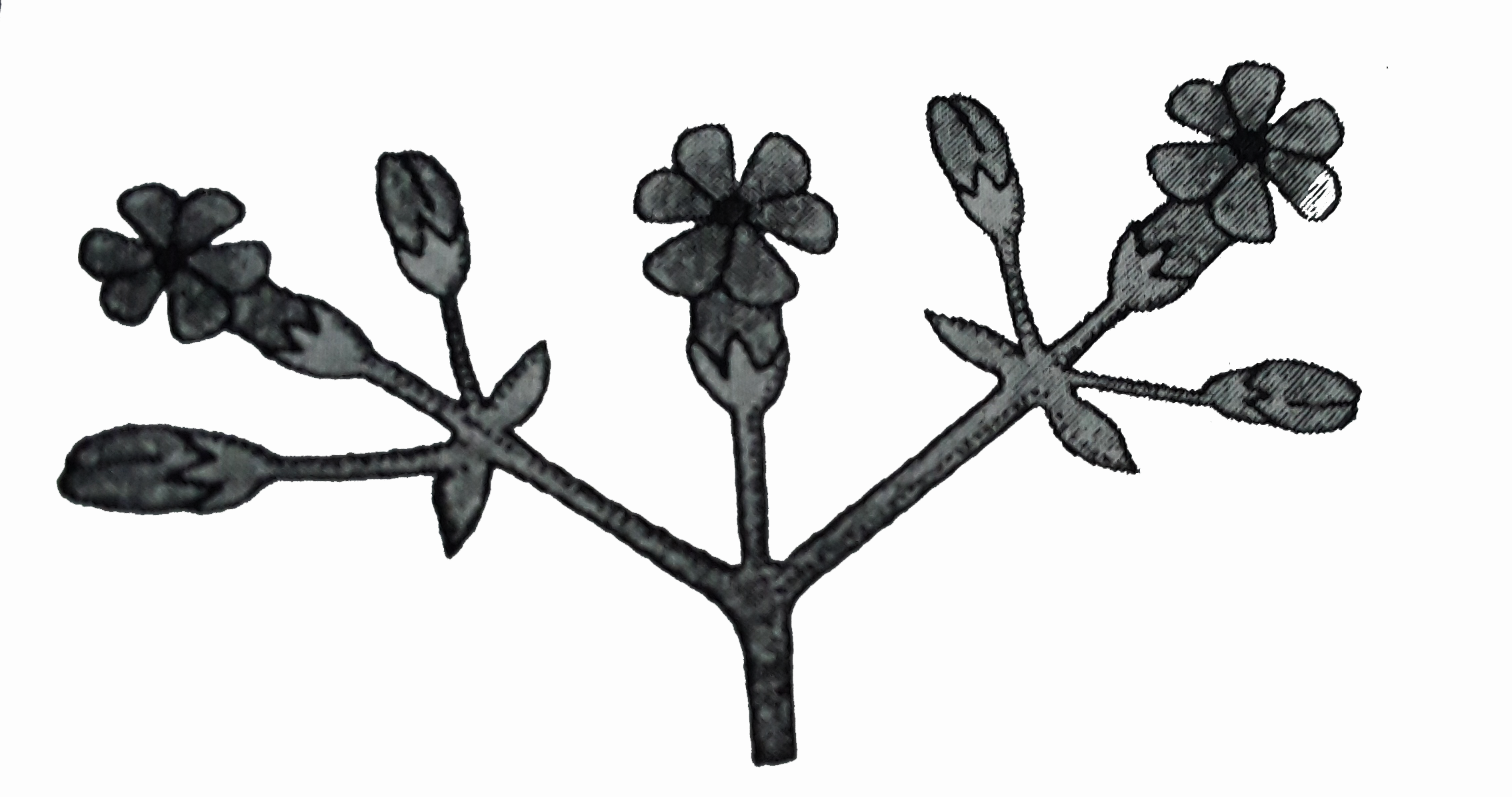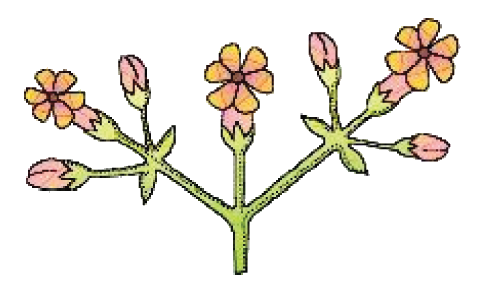Describe the term inflorescence. Explain the basis for the different types of inflorescence in flowering plants.
Step-by-Step Solution
1. Definition of Inflorescence:
- Inflorescence refers to the arrangement and distribution of flowers on the axis of a plant. It describes how flowers are organized in relation to each other and the main stem.
2. Types of Inflorescence:
- There are two primary types of inflorescence: Racemos and Cymos.
3. Racemos Inflorescence:
- Indefinite Growth: In racemos inflorescence, the main axis continues to grow indefinitely. This means that the flowering does not terminate the growth of the stem.
- Acropectal Succession: Flowers in a racemos arrangement are produced in acropectal succession, where the lower flowers are older and the upper flowers are younger.
- Lateral Flowering: Flowers are borne laterally along the main axis.
- Short Interval Opening: Flowers in this type open at short intervals.
4. Cymos Inflorescence:
- Definite Growth: In cymos inflorescence, the main axis ends in a flower, which means that the growth of the stem is terminated by the flowering.
- Basipetal Succession: Flowers are produced in basipetal succession, where the upper flowers are older and the lower flowers are younger.
- Terminal Flowering: Flowers are borne at the terminal end of the stem.
- Long Interval Opening: Flowers in this type open at longer intervals compared to racemos.
5. Summary of Differences:
- Racemos is indefinite, while Cymos is definite.
- Racemos has acropectal succession, while Cymos has basipetal succession.
- Flowers in Racemos are lateral, while in Cymos they are terminal.
- Opening intervals are shorter in Racemos and longer in Cymos.
- Inflorescence refers to the arrangement and distribution of flowers on the axis of a plant. It describes how flowers are organized in relation to each other and the main stem.
- There are two primary types of inflorescence: Racemos and Cymos.
- Indefinite Growth: In racemos inflorescence, the main axis continues to grow indefinitely. This means that the flowering does not terminate the growth of the stem.
- Acropectal Succession: Flowers in a racemos arrangement are produced in acropectal succession, where the lower flowers are older and the upper flowers are younger.
- Lateral Flowering: Flowers are borne laterally along the main axis.
- Short Interval Opening: Flowers in this type open at short intervals.
- Definite Growth: In cymos inflorescence, the main axis ends in a flower, which means that the growth of the stem is terminated by the flowering.
- Basipetal Succession: Flowers are produced in basipetal succession, where the upper flowers are older and the lower flowers are younger.
- Terminal Flowering: Flowers are borne at the terminal end of the stem.
- Long Interval Opening: Flowers in this type open at longer intervals compared to racemos.
- Racemos is indefinite, while Cymos is definite.
- Racemos has acropectal succession, while Cymos has basipetal succession.
- Flowers in Racemos are lateral, while in Cymos they are terminal.
- Opening intervals are shorter in Racemos and longer in Cymos.
Topper's Solved these Questions
- MORPHOLOGY OF FLOWERING PLANTS BOOK - ICSECHAPTER - MORPHOLOGY OF FLOWERING PLANTS EXERCISE - Ncert Exercises (Differentiate Between )
21 Videos
- MORPHOLOGY OF FLOWERING PLANTS BOOK - ICSECHAPTER - MORPHOLOGY OF FLOWERING PLANTS EXERCISE - REVIEW QUESTIONS (I. MULTIPLE CHOICE QUESTIONS)
24 Videos
- MORPHOLOGY OF FLOWERING PLANTS BOOK - ICSECHAPTER - MORPHOLOGY OF FLOWERING PLANTS EXERCISE - Test Your Progress (HOTS)
4 Videos
- MORPHOLOGY AND ANATOMY OF DIFFERENT SYSTEM OF COCKROACH BOOK - ICSECHAPTER - MORPHOLOGY AND ANATOMY OF DIFFERENT SYSTEM OF COCKROACH EXERCISE - Long Answer type Questions
6 Videos
- NEURAL CONTROL AND CO-ORDINATION BOOK - ICSECHAPTER - NEURAL CONTROL AND CO-ORDINATION EXERCISE - NCERT EXERCISES WITH ANSWER (DIFFERENTIATE BETWEEN)
11 Videos
Similar Questions
Define the term inflorescence. Explain the basis for the different types of inflorescence in flowering plants.
View Solutionthe type of inflorescence in hamelia is
View Solution
Recognize the type of inflorescence
View Solutionthe inflorescence in coconut plant is
View SolutionThe most advanced type of inflorescence is
View SolutionWhich type of inflorescence is shown below?

View SolutionDescribe the different groups of non-flowering plants.
View SolutionWhat is an inflorescence ? What are the two main types of inflorescence ?
View Solutionwhich type of inflorescence occurs in ficus
View SolutionIn family compositae, the type of inflorescence is
View Solution
